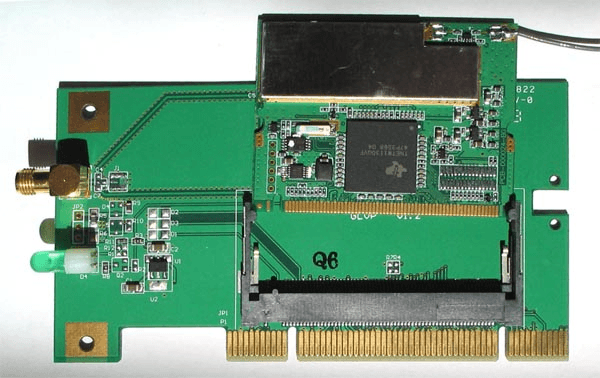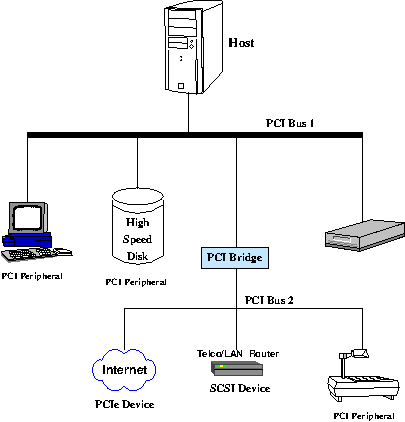IC PCI Bridges Information
 An IC PCI bridge is an electronic device or chip that connects a device with a particular PCI protocol to another PCI type, or to another device with a different protocol. It can also be used as a hub to expand the number of PCI slots available in a PCI system.
An IC PCI bridge is an electronic device or chip that connects a device with a particular PCI protocol to another PCI type, or to another device with a different protocol. It can also be used as a hub to expand the number of PCI slots available in a PCI system.
Operation
Modern computer peripherals, such as monitors, storage, and printers, require high speed interconnections and seamless equipment exchange. In 1993, engineers at Intel Architecture Development Lab innovated a protocol called peripheral component interconnect.
There is a PCI bus common to all PCI-based peripherals connected to the bus. Data from each device transmits at 32 bits per second for standard PCI. In order for the host (CPU) to receive data from only one of the connected devices, the PCI protocol contain features that allows the bus to decide which peripheral gains access to the host. For a standard PCI system, no more than five devices can be connected in order to minimize interference.

Example system with a PCI bridge connected to the main bus and managing a secondary bus with connected devices.
Image credit: A. Michelin/GlobalSpec
Advantages
Speed and Bandwidth
The standard, basic PCI protocol transfers data at a rate of 32 bits per second, at a maximum clock speed of 33 MHz, so the bandwidth is 132 megabytes per second.

Hot Swap
The protocol enables the replacement of system devices without needing to turn off the system. This reduces the mean time to repair (MTTR), an important factor in comptemporary computer networks.
Configurability
PCI is a "smart" protocol. If a new devices are added to the system then the PCI protocol configures the new layout automatically, without human intervention.
Types
There are several modalities of PCI protocol. Some of the most important are as follows.
PCI
This is the standard protocol with a typical speed of 32 bps and maximum bandwidth of 132 MB/s, as defined earlier.
PCI-X (PCI eXtended) version 1.0
A PCI variety that is operates at a speed of 64 bps and clock speeds of 66 MHz and 133 MHz. This combination produces bandwidths of 528 MB/s and 1064 MB/s respectively.
PCI-X (PCI eXtended) version 2.0
This is PCI-X version with clock rates of 266 MHz and 533 MHz, that can produce bandwidths of 2.128 GB/s and 4.264 GB/s, respectively.
PCI Express (PCIe)
PCI express (PCIe) fits common system architectures, provides greater speed and independence, and increases bandwidth and scalability. PCIe offers 4 Gbps of peak bandwidth per direction and 8 Gbps of concurrent bandwidth. PCIe is referred to as a third-generation input/output (3GIO).
Specifications
-
Protocol: such as PCI, PCI-X, or PCIe
-
Data rate: Rate of data transmission and reception, in bites per second (bps or b/s)
-
PCI data bus: 32-bit or 64-bit
-
GPIO port: the number of general purpose ports that can be connected to the bridge
-
Power dissipation: power dissipated by the device during operation
Images credits:
Wikimedia
